Motor imagery for gait rehabilitation after stroke
- PMID: 32970328
- PMCID: PMC8094749
- DOI: 10.1002/14651858.CD013019.pub2
Motor imagery for gait rehabilitation after stroke
Abstract
Background: Motor imagery (MI) is defined as a mentally rehearsed task in which movement is imagined but is not performed. The approach includes repetitive imagined body movements or rehearsing imagined acts to improve motor performance.
Objectives: To assess the treatment effects of MI for enhancing ability to walk among people following stroke.
Search methods: We searched the Cochrane Stroke Group registry, CENTRAL, MEDLINE, Embase and seven other databases. We also searched trial registries and reference lists. The last searches were conducted on 24 February 2020.
Selection criteria: Randomized controlled trials (RCTs) using MI alone or associated with action observation or physical practice to improve gait in individuals after stroke. The critical outcome was the ability to walk, assessed using either a continuous variable (walking speed) or a dichotomous variable (dependence on personal assistance). Important outcomes included walking endurance, motor function, functional mobility, and adverse events.
Data collection and analysis: Two review authors independently selected the trials according to pre-defined inclusion criteria, extracted the data, assessed the risk of bias, and applied the GRADE approach to evaluate the certainty of the evidence. The review authors contacted the study authors for clarification and missing data.
Main results: We included 21 studies, involving a total of 762 participants. Participants were in the acute, subacute, or chronic stages of stroke, and had a mean age ranging from 50 to 78 years. All participants presented at least some gait deficit. All studies compared MI training versus other therapies. Most of the included studies used MI associated with physical practice in the experimental groups. The treatment time for the experimental groups ranged from two to eight weeks. There was a high risk of bias for at least one assessed domain in 20 of the 21 included studies. Regarding our critical outcome, there was very low-certainty evidence that MI was more beneficial for improving gait (walking speed) compared to other therapies at the end of the treatment (pooled standardized mean difference (SMD) 0.44; 95% confidence interval (CI) 0.06 to 0.81; P = 0.02; six studies; 191 participants; I² = 38%). We did not include the outcome of dependence on personal assistance in the meta-analysis, because only one study provided information regarding the number of participants that became dependent or independent after interventions. For our important outcomes, there was very low-certainty evidence that MI was no more beneficial than other interventions for improving motor function (pooled mean difference (MD) 2.24, 95% CI -1.20 to 5.69; P = 0.20; three studies; 130 participants; I² = 87%) and functional mobility at the end of the treatment (pooled SMD 0.55, 95% CI -0.45 to 1.56; P = 0.09; four studies; 116 participants; I² = 64.2%). No adverse events were observed in those studies that reported this outcome (seven studies). We were unable to pool data regarding walking endurance and all other outcomes at follow-up.
Authors' conclusions: We found very low-certainty evidence regarding the short-term benefits of MI on walking speed in individuals who have had a stroke, compared to other therapies. Evidence was insufficient to estimate the effect of MI on the dependence on personal assistance and walking endurance. Compared with other therapies, the evidence indicates that MI does not improve motor function and functional mobility after stroke (very low-certainty evidence). Evidence was also insufficient to estimate the effect of MI on gait, motor function, and functional mobility after stroke compared to placebo or no intervention. Motor Imagery and other therapies used for gait rehabilitation after stroke do not appear to cause significant adverse events.
Copyright © 2020 The Cochrane Collaboration. Published by John Wiley & Sons, Ltd.
Conflict of interest statement
Stephano Silva: none known.
Lorenna RDM Borges: none known.
Lorenna Santiago: none known.
Larissa Lucena: none known.
Ana Raquel Rodrigues Lindquist: none known.
Tatiana Ribeiro: none known.
Figures
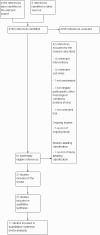

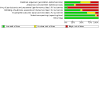

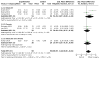
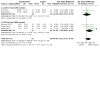
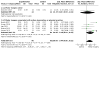
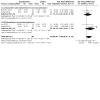
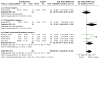

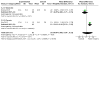

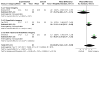
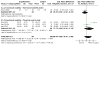
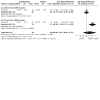
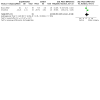
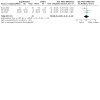
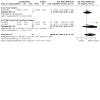
Update of
References
References to studies included in this review
Braun 2012 {published data only}
-
- Braun S, Beurskens A, Kleynen M, Oudelaar B, Schols J, Wade D. A multicenter randomized controlled trial to compare subacute ‘Treatment as Usual’ with and without mental practice among persons with stroke in Dutch nursing homes. Journal of the American Medical Directors Association 2012;13:1-7. - PubMed
Cho 2012 {published data only}
-
- Cho H-Y, Lee G-C. Effects of motor imagery training on balance and gait abilities in post-stroke patients: a randomized controlled trial. Clinical Rehabilitation 2012;27:675-80. - PubMed
Dickstein 2013 {published data only}
-
- Dickstein R, Deutsch J, Yoeli Y, Kafr M, Falash F, Dunsky A, et al. Effects of integrated motor imagery practice on gait of individuals with chronic stroke: a half- crossover randomized study. Archives of Physical Medicine and Rehabilitation 2013;94:2119-25. - PubMed
Dickstein 2014 {published data only}
-
- Dickstein R, Levy S, Shefi S, Holtzman S, Peleg S, Vatine J-j. Motor imagery group practice for gait rehabilitation in individuals with post-stroke hemiparesis: A pilot study. NeuroRehabilitation 2014;34(2):267-276. - PubMed
Gupta 2017 {published data only}
-
- Gupta A. Motor imagery in gait and balance rehabilitation for post stroke hemiparesis. Global Journal of Research Analysis 2017;6:7-11.
Kim 2013a {published data only}
-
- Kim J-H, Lee B-H. Action observation training for functional activities after stroke: a pilot randomized controlled trial. NeuroRehabilitation 2013;33:565-74. - PubMed
Kumar 2013a {published data only}
-
- Kumar V, Chakrapani M, Shennoy U, Suresh B. Effects of mental practice on functional mobility in ambulant stroke subjects: a pilot randomized clinical trial. Cerebrovascular Diseases 2013;36:94.
Kumar 2016 {published data only}
Lee 2010 {published data only}
-
- Lee W, Lee C, Chang S. Effectiveness of imagery training of functional training on the balance and gait in stroke patients. Coaching Skills Development Center 2010;12:201-11.
Lee 2011 {published data only}
-
- Lee G, Song C, Lee Y, Cho H, Lee S. Effects of motor imagery training on gait ability of patients with chronic stroke. Journal of Physical Therapy Science 2011;23:197–200.
Lee 2015 {published data only}
Liu 2004 {published data only}
-
- Liu K, Chan C, Lee T, Hui-Chan C. Mental imagery for promoting relearning for people after stroke: a randomized controlled trial. Archives of Physical Medicine and Rehabilitation 2004;85:1403-8. - PubMed
Liu 2009 {published data only}
-
- Liu KP. Use of mental imagery to improve task generalisation after a stroke. Hong Kong Medical Journal 2009;15(3 Suppl 4):37-41. - PubMed
Oostra 2015 {published data only}
-
- Oostra K, Oomen A, Vanderstraeten G, Vingerhoets G. Influence of motor imagery training on gait rehabilitation in sub-acute stroke: a randomized controlled trial. Journal of Rehabilitation Medicine 2015;47:204-9. - PubMed
Park 2019 {published data only}
-
- Park J-H. Effects of mental imagery training combined electromyogram-triggered neuromuscular electrical stimulation on upper limb function and activities of daily living in patients with chronic stroke: a randomized controlled trial. Disability and Rehabilitation 2019 4 Apr [Epub ahead of print]. [DOI: 10.1080/09638288.2019.1577502] - DOI - PubMed
Schuster 2012 {published data only}
Suvadeep 2017 {published data only}
-
- Suvadeep D, Charu C, Mehta DD, Mehndiratta MM. Comparison between mirror therapy and mental imagery in improving ankle motor recovery in sub acute stroke patients. Indian Journal of Physiotherapy and Occupational Therapy 2017;11:169-73.
Verma 2011 {published data only}
-
- Verma R, Arya K, Garg R, Singh T. Task-oriented circuit class training program with motor imagery for gait rehabilitation in poststroke patients: a randomized controlled trial. Topics in Stroke Rehabilitation 2011;18:620-32. - PubMed
Yan 2013 {published data only}
-
- Yan L, Mei F, Ping L. Influence of motor imagery therapy combined with passive foot dorsiflexion training on lower limb motor function rehabilitation in stroke patients. Chinese Nursing Research 2013;27:970-2.
Zhang 2013 {published data only}
-
- Zhang H-Y, Pazi L-Y, Zhang Y-Q, Zha L-S, Xu Y, Yuan X-l, et al. Effect of motor imagery therapy on walking ability in patients with stroke and hemiplegia. Journal of Shanghai (Medical Science) 2013;33:1225-30.
Zhu 2017 {published data only}
-
- Zhu F, Gao J, Gao R, He Y, Liu L, Ai B. Clinical efficacy of electroacupuncture combined with motor imagery therapy on hemiplegic cerebral infarction. Zhongguo Zhen Jiu 2017;37:927-31. - PubMed
References to studies excluded from this review
Bae 2015 {published data only}
Bang 2013 {published data only}
-
- Bang D, Shin W, Kim S, Choi J. The effects of action observational training on walking ability in chronic stroke patients: a double-blind randomized controlled trial. Clinical Rehabilitation 2013;27:1118-25. - PubMed
Bovend'Eerdt 2010 {published data only}
-
- Bovend'Eerdt T, Dawes H, Sackley C, Izadi H, Wade D. An integrated motor imagery program to improve functional task performance in neurorehabilitation: a single-blind randomized controlled trial.. Archives of Physical Medicine and Rehabilitation 2010;91:939-46. - PubMed
Choi 2013 {published data only}
-
- Choi B-R, Hwang S-J, Lee H-W, Kang S-Y, Jeon H-S. Group locomotor imagery training-combined knowledge of performance in community-dwelling individuals with chronic stroke: a pilot study. Physical Therapy Korea 2013;20:74-80.
Dunsky 2008 {published data only}
-
- Dunsky A, Dickstein R, Marcovitz E, Levy S, Deutsch J. Home-based motor imagery training for gait rehabilitation of people with chronic poststroke hemiparesis. Archives of Physical Medicine and Rehabilitation 2008;89:1580-8. - PubMed
Ghanjal 2014 {published data only}
-
- Ghanjal A, Torkaman G, Ghabaee M, Ebrahimi E, Motaqhey M. Effect of action observation and imitation on improving the functional activities indices in hemiplegic patients based on mirror neurons theory. Journal of Mazandaran University of Medical Sciences 2014;24:136-50.
Guttman 2012 {published data only}
-
- Guttman A, Burstin A, Brown R, Bril S, Dickstein R. Motor imagery practice for improving sit to stand and reaching to grasp in individuals with poststroke hemiparesis. Topics in Stroke Rehabilitation 2012;19:306-19. - PubMed
Hatwar 2019 {published data only}
-
- Hatwar N, Suchetha P, Kumar D. Combined effectiveness of mirror therapy and motor imagery on gait in stroke patients. International Journal of Current Research and Review 2019;11:5-10.
Hwang 2010 {published data only}
-
- Hwang S, Jeon H-S, Yi C-H, Kwon O-Y, Cho S-H, You S-H. Locomotor imagery training improves gait performance in people with chronic hemiparetic stroke: a controlled clinical trial. Clinical Rehabilitation 2010;24:514-22. - PubMed
Ietswaart 2011 {published data only}
Ji 2015 {published data only}
-
- Ji S-G, Kim M-K. The effects of mirror therapy on the gait of subacute stroke patients: a randomized controlled trial. Clinical Rehabilitation 2015;29(4):348-54. - PubMed
Kim 2011 {published data only}
-
- Kim J-S, Oh D-W, Kim S-Y, Choi J-D. Visual and kinesthetic locomotor imagery training integrated with auditory step rhythm for walking performance of patients with chronic stroke. Clinical Rehabilitation 2011;25:134-45. - PubMed
Kim 2012 {published data only}
-
- Kim J-S, Kim K. Clinical feasibility of action observation based on mirror neuron system on walking performance in post stroke patients. Journal of Physical Therapy Science 2012;24:597-9.
Kim 2013b {published data only}
Kumar 2013b {published data only}
-
- Kumar V, Chakrapani M, Shennoy U. Effects of mental practice on functional mobility and quality of life in ambulant stroke subjects–at pilot randomized controlled trial. International Journal of Scientific Research 2013;2:434-7.
Lee 2016 {published data only}
-
- Lee D, Lee G, Jeong J. Mirror therapy with neuromuscular electrical stimulation for improving motor function of stroke survivors: a pilot randomized clinical study. Technology and Health Care 2016;24:503-11. - PubMed
Malouin 2004 {published data only}
-
- Malouin F, Belleville S, Richards C, Desrosiers J, Doyon J. Working memory and mental practice outcomes after stroke. Archives of Physical Medicine and Rehabilitation 2004;85:177-83. - PubMed
Malouin 2009 {published data only}
-
- Malouin F, Richards C, Durand A, Doyon J. Added value of mental practice combined with a small amount of physical practice on the relearning of rising and sitting post-stroke: a pilot study. Journal of Physical Therapy Science 2009;33:195-202. - PubMed
Mihara 2012 {published data only}
Mohan 2013 {published data only}
Page 2001 {published data only}
-
- Page J, Levine P, Sisto S, Johnston V. A randomized efficacy and feasibility study of imagery in acute stroke. Clinical Rehabilitation 2001;15:233-40. - PubMed
Page 2005 {published data only}
-
- Page J, Levine P, Leonard A. Effects of mental practice on affected limb use and function in chronic stroke. Archives of Physical Medicine and Rehabilitation 2005;86:399-402. - PubMed
Page 2007 {published data only}
-
- Page S, Levine P, Leonard A. Mental practice in chronic stroke: results of a randomized, placebo-controlled trial. Stroke 2007;38:1293-7. - PubMed
Page 2009 {published data only}
-
- Page S, Levine P, Khoury J. Modified constraint-induced therapy combined with mental practice: thinking through better motor outcomes. Stroke 2009;40:551-4. - PubMed
Park 2013 {published data only}
Park 2015 {published data only}
Pheung‐phrarattanatrai 2015 {published data only}
-
- Pheung-phrarattanatrai A, Bovonsunthonchai S, Heingkaew V, Prayoonwiwat N, Chotik-anuchit S. Improvement of gait symmetry in patients with stroke by motor imagery. Journal of the Medical Association of Thailand 2015;98:113-8. - PubMed
Saito 2013 {published data only}
-
- Saito M, Asaka T, Fukushima J. Effects of motor imagery combined with repetitive task practice on sitting balance of hemiplegic patients. Journal of Physical Therapy Science 2013;25:183-8.
Schuster 2009 {published data only}
Sun 2011 {published data only}
-
- Sun H, Xiang Y, Yang M. Neurological rehabilitation of stroke patients via motor imaginary-based brain-computer interface technology. Neural Regeneration Research 2011;6:2198-202.
Sütbeyaz 2007 {published data only}
-
- Sütbeyaz S, Yavuzer G, Sezer N, Koseoglu BF. Mirror therapy enhances lower-extremity motor recovery and motor functioning after stroke: a randomized controlled trial. Archives of Physical Medicine and Rehabilitation 2007;88:555-9. - PubMed
Tyson 2015 {published data only}
-
- Tyson S, Wilkinson J, Thomas N, Selles R, McCabe C, Tyrrell P, et al. Phase II pragmatic randomized controlled trial of patient-led therapies (mirror therapy and lower-limb exercises) during inpatient stroke rehabilitation. Neurorehabilitation and Neural Repair 2015;29:818-26. - PubMed
References to studies awaiting assessment
References to ongoing studies
ChiCTR1800019581 {published data only}
-
- ChiCTR1800019581. Effects of motor imagery training on lower limb motor function of patients with chronic stroke. http://www.medresman.org.cn/pub/cn/proj/projectshow.aspx?proj=4475 (first received 19 November 2018).
ChiCTR‐IOR‐16008137 {published data only}
-
- ChiCTR-IOR-16008137. Graded motor imagery based on mirror neuron on rehabilitative training for stroke patients: a BOLD-fMRI study. http://www.chictr.org.cn/showproj.aspx?proj=13608 (first received 9 April 2016).
ISRCTN33487341 {published data only}
-
- ISRCTN33487341. Mental practice-based rehabilitation training to improve arm function and daily activity performance in stroke patients: a randomized clinical trial. http://www.isrctn.com/ISRCTN33487341 (first received 7 December 2007). [DOI: 10.1186/1471-2377-8-7] - DOI - PMC - PubMed
NCT01993563 {published data only}
-
- NCT01993563. Graded motor imagery for patients within a year after stroke. https://clinicaltrials.gov/ct2/show/NCT01993563 (first received 25 November 2013).
NCT03436810 {published data only}
-
- NCT03436810. Effect of structured progressive task-oriented circuit class training with motor imagery on gait in stroke. https://clinicaltrials.gov/ct2/show/study/NCT03436810 (first received 19 February 2018).
NCT04086004 {published data only}
-
- NCT04086004. Dual task balance training with additional motor imagery practice in stroke. https://clinicaltrials.gov/ct2/show/NCT04086004 (first received 11 September 2019).
NCT04215679 {published data only}
-
- NCT04215679. Effect of motor imagery with virtual reality in patients with stroke. https://www.clinicaltrials.gov/ct2/show/NCT04215679 (first received 2 January 2020).
Additional references
Atkins 2004
Barclay 2015
Barclay‐Goddard 2011
Beyaert 2015
Bonda 1995
Braun 2017
Carr 1985
-
- Carr JH, Shepherd RB, Nordholm L, Lynne D. Investigation of a new motor assessment scale for stroke patients. Physical Therapy 1985;65(2):175-80. - PubMed
Carrasco 2016
-
- Carrasco GD, Cantalapiedra AJ. Effectiveness of motor imagery or mental practice in functional recovery after stroke: a systematic review. Neurologia 2016;31(1):43-52. - PubMed
Chiu 2000
-
- Chiu HC, Chern JY, Shi HY, Chen SH, Chang JK. Physical functioning and health-related quality of life: before and after total hip replacement. Kaohsiung Journal of Medical Sciences. 2000;16(6):285-92. - PubMed
Chumney 2010
-
- Chumney D, Nollinger K, Shesko K, Skop K, Spencer M, Newton RA. Ability of Functional Independence Measure to accurately predict functional outcome of stroke-specific population: systematic review. Journal of Rehabilitation Research and Development 2010;47(1):17-29. - PubMed
Collen 1991
-
- Collen FM, Wade DT, Robb GF, Bradshaw CM. The Rivermead Mobility Index: a further development of the Rivermead Motor Assessment. International Disability Studies 1991;13(2):50-4. - PubMed
Collin 1988
-
- Collin C, Wade DR, Davies S, Horne V. Barthel ADL Index: a reliability study. International Disability Studies 1988;10(2):61-3. - PubMed
Decety 1993
-
- Decety J. Should motor imagery be used in physiotherapy? Recent advances in cognitive neurosciences. Physiotherapy Theory and Practice 1993;9(4):193-203.
Decety 1996
-
- Decety J. The neurophysiological basis of motor imagery. Behavioural Brain Research 1996;77(1-2):45-52. - PubMed
Deeks 2011
-
- Deeks JJ, Higgins JPT, Altman DG. Chapter 9: Analysing data and undertaking meta-analyses. In: Higgins JP, Green S, editor(s). Cochrane Handbook for Systematic Reviews of Interventions Version 5.1.0 (updated March 2011). The Cochrane Collaboration, 2011. Available from handbook.cochrane.org.
Dickstein 2004
-
- Dickstein R, Dunsky A, Marcovitz E. Motor imagery for gait rehabilitation in post-stroke hemiparesis. Physical Therapy 2004;84(12):1167-77. - PubMed
Driediger 2006
-
- Driediger M, Hall C, Callow N. Imagery use by injured athletes: a qualitative analysis. Journal of Sports Sciences 2006;24(3):261-71. - PubMed
Dujovic 2017
-
- Dujovic SD, Malesevi J, Malesevi N, Vidakovic AS, Bijelic G, Kellere T, et al. Novel multi-pad functional electrical stimulation in stroke patients: a single-blind randomized study. NeuroRehabilitation 2017;41(4):791-800. - PubMed
French 2016
Fugl‐Meyer 1975
-
- Fugl-Meyer AR, Jaasko L, Leyman I, Olsson S, Steglind S. The post-stroke hemiplegic patient. A method for evaluation of physical performance. Scandanavian Journal of Rehabilitation Medicine 1975;7:13-31. - PubMed
Garrison 2010
GRADEpro GDT 2015 [Computer program]
-
- GRADEpro GDT. Version accessed prior to 23 April 2018. Hamilton (ON): McMaster University (developed by Evidence Prime), 2015. Available at gradepro.org.
Guerra 2017
-
- Guerra ZF, Lucchetti ALG, Lucchetti G. Motor imagery training after stroke: a systematic review and meta-analysis of randomized controlled trials. Journal of Neurologic Physical Therapy 2017;41(4):205-14. - PubMed
Hamilton 1994
-
- Hamilton BB, Laughlin JA, Fiedler RC, Granger CV. Interrater reliability of the 7-level functional independence measure (FIM). Scandinavian Journal of Rehabilitation Medicine 1994;26(3):115-9. - PubMed
Higgins 2011
-
- Higgins JPT, Green S (editors). Cochrane Handbook for Systematic Reviews of Interventions Version 5.1.0 [updated March 2011]. The Cochrane Collaboration, 2011. www.cochrane-handbook.org.
Hoffmann 2014
Holden 1984
-
- Holden MK, Gill KM, Magliozzi MR, Nathan J, Peihl-Baker L. Clinical gait assessment in the neurologically impaired: reliability and meaningfulness. Physical Therapy 1984;64(1):35-40. - PubMed
Hosseini 2012
-
- Hosseini SA, Fallahpour M, Sayadi M, Gharib M, Haghgoo H. The impact of mental practice on stroke patients' postural balance. Journal of the Neurological Sciences 2012;322(1-2):263-7. - PubMed
Jeannerod 1995
-
- Jeannerod M, Decety J. Mental motor imagery: a window into the representational stages of action. Current Opinion in Neurobiology 1995;5(6):727-32. - PubMed
Jeannerod 2001
-
- Jeannerod M. Neural simulation of action: a unifying mechanism for motor cognition. Neuroimage 2001;14(1 Pt 2):S103-9. - PubMed
Johnson 2000
-
- Johnson SH. Imagining the impossible: intact motor representations in hemiplegics. NeuroReport 2000;11(4):729-32. - PubMed
Johnson 2002a
-
- Johnson SH, Sprehn G, Saykin AJ. Intact motor imagery in chronic upper limb hemiplegics: evidence for activity-independent action representations. Journal of Cognitive Neuroscience 2002;14(6):841–52. - PubMed
Johnson 2002b
-
- Johnson SH, Rotte M, Grafton ST, Hinrichs H, Gazzaniga MS, Heinze HJ. Selective activation of a parietofrontal circuit during implicitly imagined prehension. Neuroimage 2002;17(4):1693-704. - PubMed
Jørgensen 1995
-
- Jørgensen H, Nakayama H, Ho R, Olsen T. Recovery of walking function in stroke patients: the Copenhagen Stroke Study. Archives of Physical Medicine and Rehabilitation 1995;76(1):27-32. - PubMed
Kim 2018
Lamontagne 2004
-
- Lamontagne A, Fung J. Faster is better: implications for speed-intensive gait training after stroke. Stroke 2004;35(11):2543-8. - PubMed
Langhorne 2009
-
- Langhorne P, Coupar F, Pollock A. Motor recovery after stroke: a systematic review. Lancet Neurology 2009;8(8):741-54. - PubMed
Lefebvre 2011
-
- Lefebvre C, Manheimer E, Glanville J. Chapter 6: Searching for studies. In: Higgins JP, Green S, editor(s). Cochrane Handbook for Systematic Reviews of Interventions Version 5.1.0 (updated March 2011). The Cochrane Collaboration, 2011. Available from handbook.cochrane.org.
Li 2017
-
- Li RQ, Li ZM, Tan JY, Chen GL, Lin WY. Effects of motor imagery on walking function and balance in patients after stroke: a quantitative synthesis of randomized controlled trials. Complementary Therapies in Clinical Practice 2017 May 26 [Epub ahead of print]. [DOI: 10.1016/j.ctcp.2017.05.009] - DOI - PubMed
Lotze 1999
-
- Lotze M, Montoya P, Erb M, Hülsmann E, Flor H, Klose U, et al. Activation of cortical and cerebellar motor areas during executed and imagined hand movements: an fMRI study. Journal of Cognitive Neuroscience 1999;11(5):491-501. - PubMed
Mehrholz 2017
Mikołajewska 2017
-
- Mikołajewska E. Bobath and traditional approaches in post-stroke gait rehabilitation in adults. Biomedical Human Kinetics 2017;9(1):27-33.
Moher 2001
-
- Moher D, Schulz KF, Altman DG. The CONSORT statement: revised recommendations for improving the quality of reports of parallel-group randomised trials. Lancet 2001;357(9263):1191-4. - PubMed
Moura 2012
-
- Moura DMS. Intervention Proposal to Assist the Motor and Cognitive Rehabilitation of Patients with Stroke [Proposta de Intervenção para Auxiliar a Reabilitação Motora e Cognitiva de Pacientes com Acidente Vascular Cerebral] [Masters thesis]. Natal (Brazil): Federal University of Rio Grande do Norte, 2012.
Mulder 2007
Munzert 2009
-
- Munzert J, Lorey B, Zentgraf K. Cognitive motor processes: the role of motor imagery in the study of motor representations. Brain Research Reviews 2009;60(2):306-26. - PubMed
Podsiadlo 1991
-
- Podsiadlo D, Richardson S. The timed "Up & Go": a test of basic functional mobility for frail elderly persons. Journal of the American Geriatric Society 1991;39(2):142-8. - PubMed
Ramachandran 1994
-
- Ramachandran VS. Phantom limbs, neglect syndromes, repressed memories, and Freudian psychology. International Review of Neurobiology 1994;37:291-333. - PubMed
Rayegani 2016
Review Manager 2014 [Computer program]
-
- Review Manager (RevMan). Version 5.3. Copenhagen: The Nordic Cochrane Centre, The Cochrane Collaboration, 2014.
Sakuma 2014
Sharma 2006
-
- Sharma N, Pomeroy VM, Baron J-C. Motor imagery: a backdoor to the motor system after stroke? Stroke 2006;37:1941–52. - PubMed
States 2009
Sun 2013
-
- Sun L, Yin D, Zhu Y, Fan M, Zang L, Wu Y, et al. Cortical reorganization after motor imagery training in chronic stroke patients with severe motor impairment: a longitudinal fMRI study. Neuroradiology 2013;55(7):913-25. - PubMed
Thieme 2016
-
- Thieme H, Morkisch N, Rietz C, Dohle C, Borgetto B. Techniques for treatment of limb pain: a systematic review and meta-analysis. Journal of Pain 2016;17(2):167-80. - PubMed
Wang 2016
Whitall 2004
-
- Whitall J. Stroke rehabilitation research: time to answer more specific questions? Neurorehabilitation and Neural Repair 2004;18(1):3-8. - PubMed
WHO 2017
-
- World Health Organization. Cardiovascular diseases fact sheet. www.who.int/mediacentre/factsheets/fs317/en/ (accessed 12 March 2017).
Winstein 2016
-
- Winstein CJ, Stein J, Arena R, Bates B, Cherney LR, Cramer SC, et al American Heart Association Stroke Council, Council on Cardiovascular and Stroke Nursing, Council on Clinical Cardiology, and Council on Quality of Care and Outcomes Research. Guidelines for adult stroke rehabilitation and recovery: a guideline for healthcare professionals from the American Heart Association/American Stroke Association. Stroke 2016;47(6):e98-169. - PubMed
Publication types
MeSH terms
Grants and funding
LinkOut - more resources
Full Text Sources
Medical

